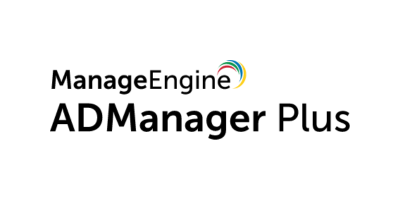
Identity and access management software is key for protecting your company’s networks, servers and other business resources. Okta is one of the most well-known companies in the IAM space, but up-and-coming competitor JumpCloud has recently challenged Okta’s dominance. We’re comparing the essential features of JumpCloud and Okta to help you choose the right IAM software for your business.
SEE: Password breach: Why pop culture and passwords don’t mix (free PDF) (TechRepublic)
What is JumpCloud?
JumpCloud is a cloud-based zero-trust directory platform that offers single sign-on, cloud LDAP, Cloud RADIUS, multi-factor authentication, device management, server access and more. Whether you need to manage cloud-based apps or on-premise devices, JumpCloud seeks to be a comprehensive IAM solution for cloud-forward companies.
What is Okta?
Okta is one of the world’s leading identity platforms, and more than 15,000 customers rely on it to secure the data of their users. Okta offers SSO, multi-factor authentication, advanced server access, universal directory and more through its cloud-based platform.
JumpCloud vs. Okta: Feature comparison
| Features | JumpCloud | Okta |
|---|---|---|
| Single sign-on | Yes | Yes |
| Mobile device management | Yes | No |
| IaaS server connection | Yes | No |
| Multi-factor authentication | Yes | Yes |
| Password manager | Yes | Yes |
Head-to-head comparison: JumpCloud vs. Okta
Single sign-on
SSO is Okta’s calling card, and the primary reason why many people use this software. Okta offers more than 7,000 pre-built connectors that allow employees to easily log-in to almost any website or app with a secure SSO. It also offers the ability to use its cloud-based SSO with on-premise apps thanks to 1,400+ SAML and OpenID Connect integrations. The sheer number of out-of-the-box options means that you can be up and running with Okta’s SSO in weeks, not months.
JumpCloud does offer SSO as one of its features, but its library of pre-built connectors is much smaller. JumpCloud only offers about 750 pre-built integrations, roughly 10% of what Okta provides out of the box.
If you only need SSO for more recognizable apps like AWS and Google, JumpCloud will likely have what you need, but you can browse their list of pre-built connectors to confirm. If you need SSO for a more niche app, or a wide variety of apps, Okta is the way to go.
Mobile device management
In contrast to its native SSO connectors, Okta relies on third-party integrations to provide MDM functionality. Since Okta has been around so long, and MDM is so essential for identifying access management, you will have your pick of several integrations, including Microsoft Intune, VMware Workspace One and MobileIron. Users say that these integrations are easy to set up and use, but having to turn to a third-party service still means that you will need to run, maintain and pay for yet another component in addition to Okta, which may be undesirable.
On the other hand, JumpCloud offers both device authentication and device management. JumpCloud’s Directory-as-a-Service can be used for Windows, Mac and Linux devices, allowing your IT department to manage a diverse mix of devices across a large organization. Your admins can initiate and terminate access to hardware as needed in addition to executing scripts, updating applications and changing files.
If you only want to pay for one service that offers both SSO and MDM, go with JumpCloud over Okta.
Infrastructure as a service
JumpCloud and Okta each take a slightly different approach to server infrastructure. Okta doesn’t authenticate users to the server infrastructure directly. Instead, it connects users to the user management consoles of the servers.
JumpCloud goes a different route, connecting users directly to the actual servers of different IaaS providers. Some of these IaaS servers include AWS, Azure and Google Compute Engine. If connecting directly to the servers of IaaS providers matters to your company, then JumpCloud is a more solid bet.
JumpCloud vs. Okta: Which should you choose?
Many companies actually use both JumpCloud and Okta in conjunction with each other, relying on Okta for its robust SSO capabilities while turning to JumpCloud for its cloud directory service, mobile device management and other features.
If you’re looking to pick just one over the other and want a reputable SSO provider with thousands of app connectors ready to go, choose Okta. If you want more functionality and a well-rounded IAM solution with multiple features in one package, choose JumpCloud.
Leading IAM Solutions
1 Twingate
Twingate helps fast-growing companies easily implement a Zero Trust secure access solution without compromising security, usability, or performance. We believe that “Work from Anywhere” should just work. Twingate’s secure access platform replaces legacy VPNs with a modern Identity-First Networking solution that combines enterprise-grade security with a consumer-grade user experience. It can be set up in less than 15 minutes and integrates with all major cloud providers and identity providers.
2 ManageEngine ADManager Plus
ADManager Plus is a unified AD, Exchange, Teams, Google Workspace, and Microsoft 365 management solution to simplify tasks such as provisioning users, cleaning up stale accounts, and managing NTFS and share permissions. It offers 200 built-in reports, including reports on inactive user accounts, Microsoft 365 licenses, and users' last logon times. You can build a custom workflow for ticketing and compliance, delegate tasks to technicians, automate AD tasks such as restore and backup AD objects.










